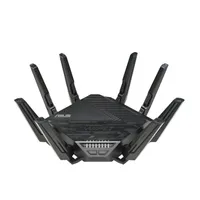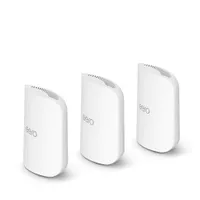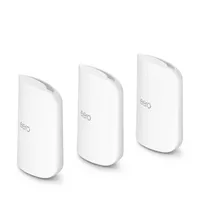TP-Link Wi-Fi routers could be banned in US: What you need to know
One of the most popular router brands in the country is in the government's crosshairs
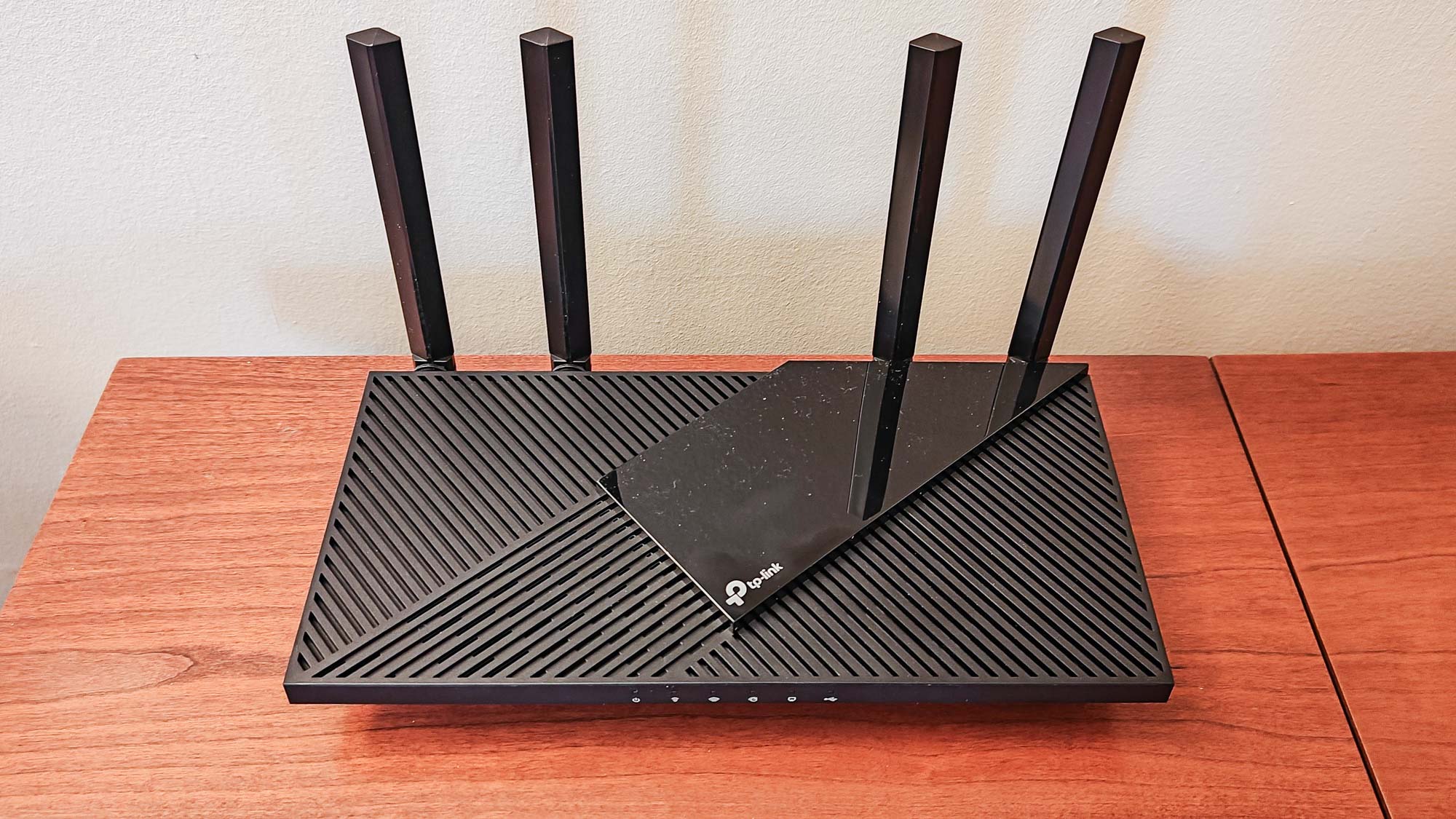
TP-Link makes some of the most popular and the best Wi-Fi routers but a U.S. government ban on them could be one step closer to reality.
The Shenzhen, China-based company has been in the crosshairs of the American government since December of 2024 when The Wall Street Journal reported that a potential ban was coming within the next calendar year.
Initially, the ban was floated by the Commerce Department. A Washington Post report from late October 2025 indicates that multiple other agencies are backing a potential ban too. Apparently, a coalition of Homeland Security, the Justice Department and the Department of Defense spent this past summer looking into the ban.
Largely, as with the resolved TikTok ban, US officials are concerned about links between TP-Link and the Chinese government. Unnamed officials told the Post that their concern stems from Chinese laws that require TP-Link to comply with Chinese intelligence agency requests. They believe the company could be forced to push malicious software updates to US-based devices.
What is TP-Link
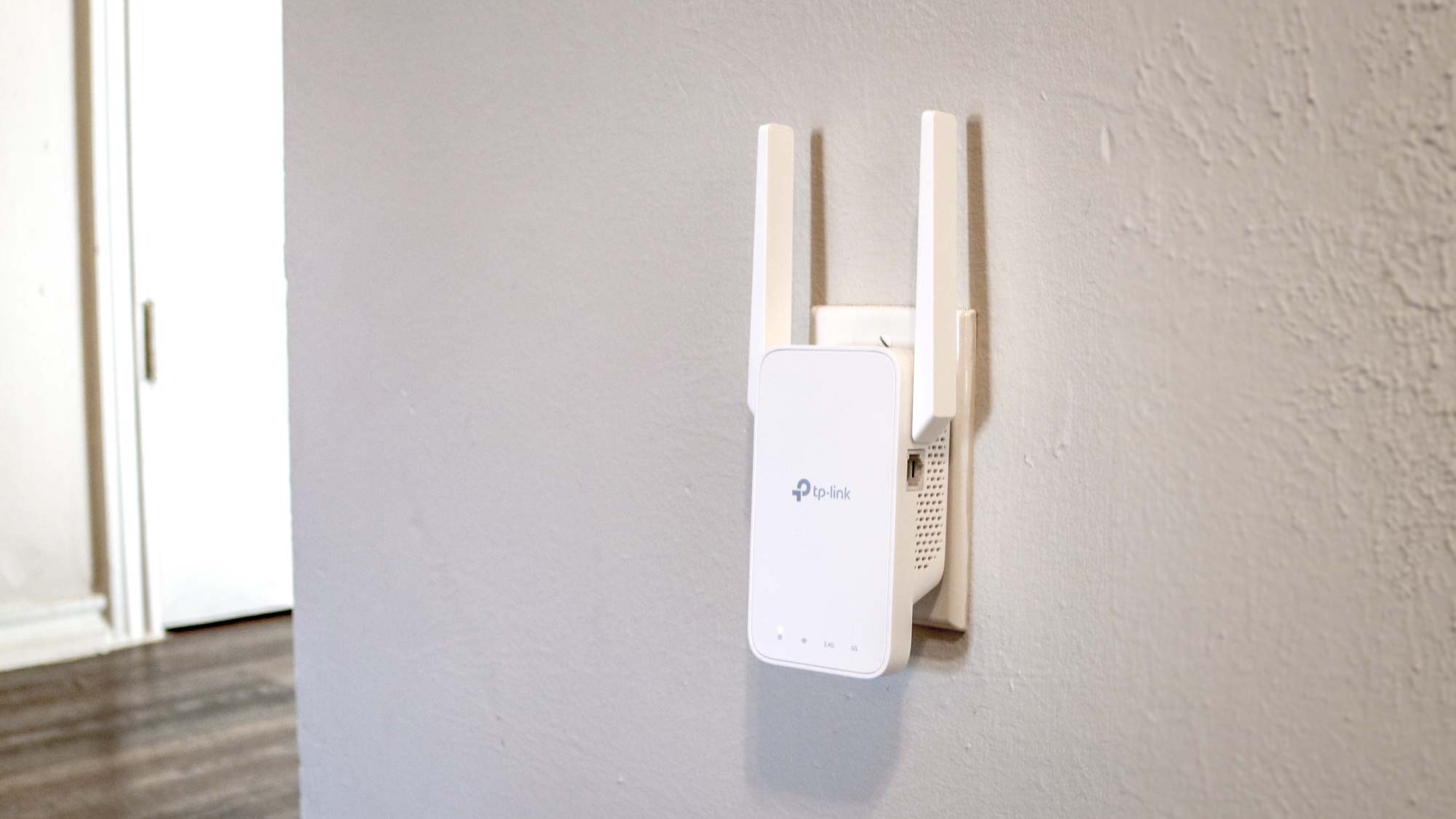
TP-Link is a technology company that makes networking and smart home equipment including routers, smart cameras, plugs and lighting.
Their routers are among the most popular in the country making up nearly 65% of the US market and covering everything from homes and businesses as well as government and military offices.
The 65% number is in dispute though. A former American cybersecurity official told Congress the number was closer to 60%. In December, a TP-Link spokesperson sent Tom's Guide a study that seems to show TP-Link only has a 12% market share in the US for consumers and less than 2% for businesses. That study showed TP-Link behind companies like Ubiquiti, Netgear and Cisco.
Get instant access to breaking news, the hottest reviews, great deals and helpful tips.
For the most part, TP-Link routers are less expensive than competitors while offering equal services. However, those lower prices are one of the reasons the Department of Justice is investigating the company with claims that they are an attempt to create a monopoly as TP-Link is selling them for less than they cost to manufacture.
TP-Link spokespeople have been keen to note that the company's U.S entity is based in Irvine, California, not Shenzhen. The Irvine location opened in 2023. A press release from May of 2024 indicated that the company restructured with "dual" headquarters in the United States and Singapore. From then on, Shenzhen disappears from press releases and is replaced by Irvine. Our research indicates that the company was founded in Shenzhen and still operates there though.
How we got here

TP-Link was first investigated by at least the Defense Department in August of 2024 when it opened an investigation into the vulnerabilities of Chinese routers. Near simultaneously, a House Committee called for an investigation into TP-Link's routers.
"TP-Link’s unusual degree of vulnerabilities and required compliance with PRC law are in and of themselves disconcerting," lawmakers wrote. "When combined with the PRC government’s common use of SOHO [small office/home office] routers like TP-Link to perpetrate extensive cyberattacks in the United States, it becomes significantly alarming."
Two months later in October, Microsoft's Threat Intelligence group released a report that found TP-Link routers were the most compromised devices in a Chinese "password spray" attack and called the hacks "nation-state threat actor activity." That assessment tracked attacks going back to August of 2023.
In December of 2024, similar issues were raised by sources that told the Wall Street Journal that TP-Link allegedly ships routers with security vulnerabilities and claimed that the company had been resistant to addressing those flaws.
At the time, Tom's Guide reached out to the Irvine-based U.S. subsidiary of TP-Link. A spokesperson acknowledged the vulnerabilities, but defended the company's practices.
"Contrary to claims of widespread vulnerabilities, comparative data places TP-Link on par with, or in some cases ahead of, other major industry players in terms of security outcomes," they said. "For example, public vulnerability data (sourced from recognized security repositories like CVE Details and VulDB) shows that TP-Link’s rate of vulnerabilities per product is significantly lower than those of other leading manufacturers."
A different spokesperson told the WSJ that the company is open to working with the US government "to demonstrate that our security practices are fully in line with industry security standards, and to demonstrate our ongoing commitment to the U.S. market, U.S. consumers, and addressing U.S. national security risks."
2025 hasn't been better for TP-Link
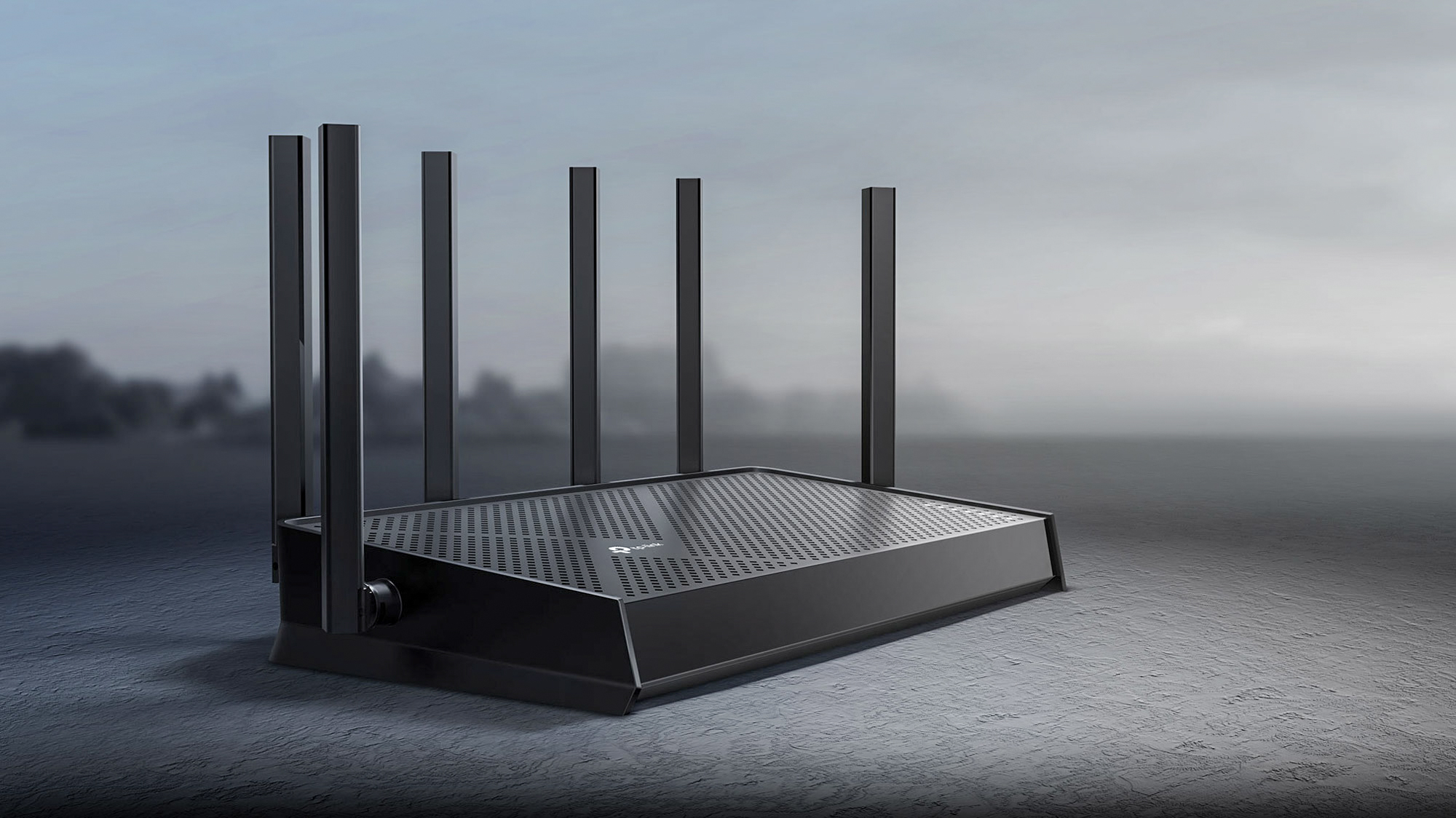
In March of 2025, the House of Representatives Select Committee on China held a hearing. "Don't use this," U.S. Rep Raja Krishnamoorthi said while holding a TP-Link router, "I don't have one at home either. It's not a good idea."
Throughout the year, TP-Link routers were hit with several attacks including the Italian Ballista botnet that targeted multiple industries including healthcare services, manufacturing and technology businesses.
The U.S. Cybersecurity and Infrastructure Security Agency (CISA) flagged two security flaws related to TP-Link routers in September that could be exploited. Though TP-Link had released updates for the flaws last year and did recommend upgrading since the affected models TL-WR841N (versions 10.0 and 11.0), TL-WR841ND (version 10.0), and Archer C7 were considered to have reached end-of-life status.
The US vs China and bans

In the last few years, dating back to the first Trump administration, Chinese products have been under the microscope. Whether its Trump who banned the sale of Huawei products in the U.S. or President Biden whose administration picked up on banning TikTok and DJI Drones.
These bans have been proposed or enacted under the auspices of national security and claimed threats of Chinese spying or hacking activity.
The potential TP-Link bans comes as the back and forth tariff war between President Trump and China reaches its current lull. Just before Halloween, Trump and China agreed to lower tariffs though perhaps not as significantly as people might have hoped. The US Senate also passed a resolution to repeal Trump's global tariffs, whether it gets voted on in the the House is another matter though.
If a TP-Link ban is enacted it could be massive and would likely originate from the Office for Information and Communications Technology and Services, which was created under the first Trump administration. That agency was granted the power to prohibit companies from designated nations from selling their products or services in the United States. It's biggest hit so far has been banning the Russian software company Kaspersky from selling its antivirus software in the US.
How to improve your router security
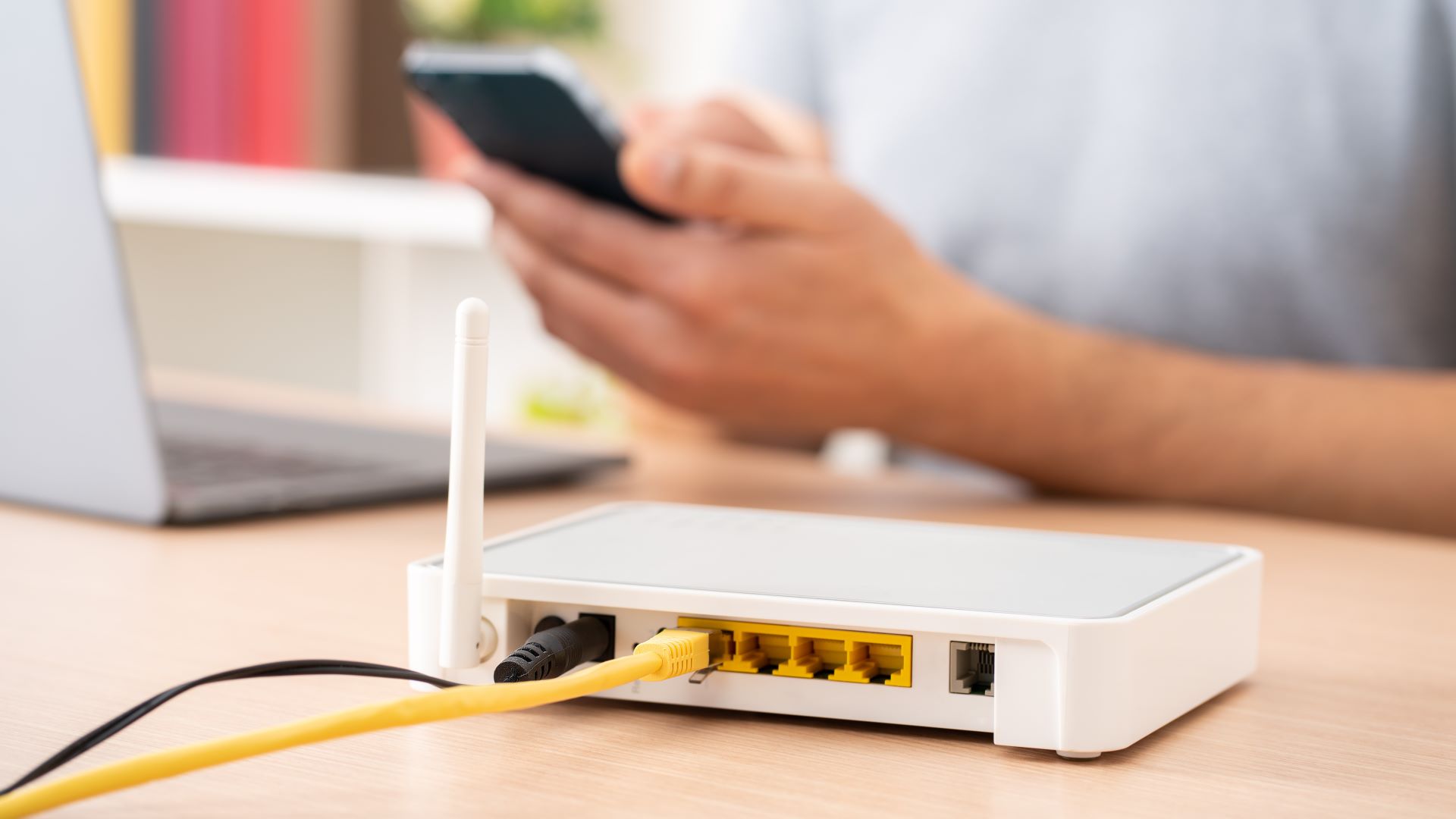
At Tom's Guide, we're monitoring the potential ban and will reevaluate our recommendations if it comes to pass.
That said, whether it's 12% or 65%, many people have TP-Link routers and could be concerned about them being compromised.
Last year's Microsoft analysis found that many TP-Link routers were compromised because owners failed to change the default passwords, the first thing you should do when setting up a new router.
With that in mind, here are some other steps to make your router more secure:
- Create custom login credentials: Most everyday cybersecurity issues stem from people keeping the default login credentials set by the manufacturer or internet provider who supplied the device. Many routers have apps where credentials can be changed, or you can type your IP address in your browser's address bar. As always, avoid common words or character combinations (no "123456" or "password"). Longer is better and you want to use a combination of letters, symbols and numbers to create strong passwords for all of your devices and accounts. Additionally, you never want to reuse passwords across accounts because if hackers compromise one of them, they will then try those credentials to access your other accounts/devices.
- Update your firmware: Often, router makers, like TP-Link, release firmware updates that contain security patches. Keep your router up to date and regularly check for updates.
- Ensure your firewall and Wi-Fi encryption are on: Firewalls and Wi-Fi encryption should be on by default, but it can't hurt to double-check. These features being on help make it harder for bad actors to see data sent between your router and connected devices. These can be found in relevant router apps or websites. Likewise, you can also use one of the best VPNs to keep the data sent from your devices to the internet private and secure.
- Consider a new router: TP-Link gained massive market share over the years by undercutting the competition with less expensive routers. Since your router is something you and the rest of your household use every day, upgrading to a new one is a worthwhile investment, especially if you're worried. However, this could also give you a chance to outfit your house with the latest wireless tech in the form of Wi-Fi 6E or Wi-Fi 7 if you're using an older Wi-Fi 5 or Wi-Fi 6 device.
TP-Link alternatives worth considering
Whether you're looking to replace your own TP-Link router or just want to upgrade to something faster and more modern, here are a few alternatives we highly recommend.
From the best Wi-Fi 7 routers with the latest tech to the best mesh Wi-Fi systems that can cover your whole home in a strong signal and eliminate Wi-Fi dead zones for good, you'll find something to meet your home networking needs and your budget below:
The Google Nest WiFi Pro is a Wi-Fi 6E-powered mesh router with a stylish design. While you can get three identical units in all white, only the multi-colored three-pack is currently on sale. Each Nest WiFi Pro device has a range of 2,200 square feet, two gigabit Ethernet ports around back and you can control and manage your whole network in the Google Home app. In our Nest WiFi Pro review, we highlighted its built-in Matter support for connecting smart home gadgets and its smaller size compared to Netgear’s larger Orbi devices.
The Asus RT-BE96U is one of the fastest Wi-Fi 7 routers to date and it even includes built-in, subscription-free security software as well as parental controls. Around back, there are two 10 Gbps ports (one for WAN, one for LAN), four gigabit Ethernet ports and two USB ports. In our Asus RT-BE96U review, we loved its fast speeds and all of the detailed information available in its app. This one could drop to even a lower price during Prime Big Day Deals though.
The Eero Pro 7 is a Wi-Fi 7-powered mesh kit that’s much more compact than the larger Eero Max 7 and a whole lot cheaper too. Unlike the smaller Eero 7, this is a tri-band mesh router with all of Wi-Fi 7’s best features. Each unit can cover up to 2,00 square feet and supports over 200 connected devices. On the back of the Eero Pro 7, you get two high-speed 5 Gbps Ethernet ports and any of the units can serve as your main router. In our Eero Pro 7 review, we praised this mesh router’s ability to deliver excellent speeds at mid-range distances.
The Netgear Orbi 770 is a Wi-Fi 7-powered mesh kit that can cover up to 8,000 square feet with support for more than 100 devices. It’s packed with multi-gig ports too and you get four 2.5Gbps ones on the main unit. In our Netgear Orbi 770 review, we were very impressed with its performance, particularly at mid-range distances where other mesh Wi-Fi systems tend to fall short. Compared to the more expensive Orbi 970 that will likely be overkill for most people, the Orbi 770 hits the sweet spot for a Wi-Fi 7 mesh kit.
The eero Max 7 is at the top of eero’s Wi-Fi 7 mesh kit lineup with loads of power and plenty of multi-gig ports. This tri-bad Wi-Fi 7 mesh kit can support more than 250 connected devices while each unit can cover up to 2,500 square feet with a strong Wi-Fi signal. In terms of ports, you get two 10 Gigabit Ethernet ports and two 2.5 Gigabit Ethernet ports. In our eero Max 7 review, we loved all the extra smart home features built into this mesh kit including the fact that it can serve as a smart home hub for your other connected devices.
Follow Tom's Guide on Google News and add us as a preferred source to get our up-to-date news, analysis, and reviews in your feeds. Make sure to click the Follow button!
More from Tom's Guide
- Best Wi-Fi extenders in 2025: eliminate dead zones without a major upgrade
- Wi-Fi 8 just got its first ever demo — here's what makes it different
- What internet speed do I need? Here's how many Mbps is enough

Scott Younker is the West Coast Reporter at Tom’s Guide. He covers all the lastest tech news. He’s been involved in tech since 2011 at various outlets and is on an ongoing hunt to build the easiest to use home media system. When not writing about the latest devices, you are more than welcome to discuss board games or disc golf with him. He also handles all the Connections coverage on Tom's Guide and has been playing the addictive NYT game since it released.
- Anthony SpadaforaManaging Editor Security and Home Office
You must confirm your public display name before commenting
Please logout and then login again, you will then be prompted to enter your display name.

